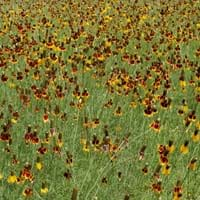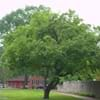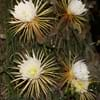Life Span
Perennial
Perennial
Type
Flowering Plants, Shrubs, Vines
Perennial
Origin
Southern Africa
Southeastern United States, North-Central United States, Central United States, South-Central United States, Southwestern United States, Texas, Canada, Mexico
Types
Arabian jasmine, Sambac jasmine, Gold Coast jasmine
Not Available
Number of Varieties
Not Available
Habitat
Forest edges, Hillside, Woods
Dry areas, Prairies, Rocky areas, rocky outcrops
USDA Hardiness Zone
Not Available
3-10
Sunset Zone
8, 9, 13, 14, 15, 16, 17, 18, 19, 20, 21, 22, 23, 24
A1, A2, A3, H1, H2, 1a, 1b, 2a, 2b, 3a, 3b, 4, 5, 6, 7, 8, 9, 10, 11, 12, 13, 14, 15, 16, 17, 18, 19, 20, 21, 22, 23, 24
Habit
Upright/Erect
Upright/Erect
Flower Color
Pale White, White
Yellow, Purple, Burgundy, Light Green, Brown
Flower Color Modifier
Not Available
Bicolor
Fruit Color
Black, Brown
Brown
Leaf Color in Spring
Gray Green
Light Green, Gray Green
Leaf Color in Summer
Gray Green
Light Green, Gray Green
Leaf Color in Fall
Gray Green
Light Green, Gray Green
Leaf Color in Winter
Gray Green
Light Green
Leaf Shape
Oblovate
Subulate
Plant Season
Spring, Summer, Fall, Winter
Summer
Sunlight
Full Sun, Partial Sun
Full Sun
Type of Soil
Loam, Sand
Loam, Sand
The pH of Soil
Acidic, Neutral, Alkaline
Neutral
Soil Drainage
Well drained
Well drained
Bloom Time
Early Spring, Spring, Late Winter
Late Spring, Early Summer, Summer, Late Summer
Tolerances
Drought
Drought
Where to Plant?
Container
Ground
How to Plant?
Seedlings, Stem Planting
Seedlings
Plant Maintenance
Medium
Medium
Watering Requirements
Do Not over Water, Requires regular watering
Average Water Needs, Water in morning to avoid prompting diseases
In Summer
Lots of watering
Lots of watering
In Spring
Moderate
Moderate
In Winter
Average Water
Average Water
Soil pH
Acidic, Neutral, Alkaline
Neutral
Soil Type
Loam, Sand
Loam, Sand
Soil Drainage Capacity
Well drained
Well drained
Sun Exposure
Full Sun, Partial Sun
Full Sun
Pruning
Proper mowing practices are necessary, Prune after flowering
Cut or pinch the stems, Pinch Tips, Remove damaged leaves, Remove dead branches, Remove dead flowers, Remove dead leaves, Remove dead or diseased plant parts, Remove deadheads
Fertilizers
Compost, Fertilize the soil before planting, General garden fertilizer
All-Purpose Liquid Fertilizer, Apply N-P-K
Pests and Diseases
Caterpillars, Leaf curl, Mildew
Pests and diseases free, Red blotch
Plant Tolerance
Humidity, Salt and Soil Compaction, Shade areas
Drought, Dry Conditions, Dry soil, Full Sun
Flower Petal Number
Single
Single
Foliage Texture
Bold
Fine
Foliage Sheen
Matte
Matte
Attracts
Butterflies, Hummingbirds
Birds, Butterflies
Allergy
Chest tightness, Nausea, Vomiting
Rhinitis
Aesthetic Uses
Hanging Basket, small hedge
Borders
Beauty Benefits
Good for the Scalp, Makes teeth white, Provides herbal hair care, Skin cleanser
Not Available
Environmental Uses
Air purification, Indoor Air Purification, Insect Repellent
Air purification
Medicinal Uses
Fever, Kidney problems, Urinary tract problems
Analgesic
Part of Plant Used
Flowers, Root
Flowers
Other Uses
Basketary, Cosmetics, Oil is used for aromatherapy, Oil is used in mosquito repellents, Oil is used in perfume, soaps, creams, etc., Used for fragrance
Can be made into a herbal tea, Used in making tea
Used As Indoor Plant
Yes
No
Used As Outdoor Plant
Yes
Yes
Garden Design
Container, Feature Plant, Foundation, Hedges, Mixed Border, Rock Garden, Wall, Tropical
Container, Cutflower, Mixed Border, Wildflower
Botanical Name
ALOE arborescens
RATIBIDA columnifera
Common Name
Hydrangea or hortensia
Mexican Hat
In Hindi
चमेली
Mexican Hat
In German
Jasmin
Mexican Hat
In French
Jasmin
Mexican Hat
In Spanish
Hortensia
mexican Hat
In Greek
υδραγεία
Mexican Hat
In Portuguese
Jasmin
Mexican Hat
In Polish
Jasmin
Mexican Hat
In Latin
Jasmin
Mexicanus Hat
Phylum
Magnoliophyta
Tracheophyta
Class
Magnoliopsida
Magnoliopsida
Order
Scrophulariales
Asterales
Family
Aloaceae
Asteraceae
Clade
Angiosperms, Asterids
Angiosperms, Asterids, Eudicots
Tribe
Jasmineae
Not Available
Subfamily
Not Available
Not Available
Number of Species
Not Available
Season and Care of Jasmine and Mexican Hat
Season and care of Jasmine and Mexican Hat is important to know. While considering everything about Jasmine and Mexican Hat Care, growing season is an essential factor. Jasmine season is Spring, Summer, Fall and Winter and Mexican Hat season is Spring, Summer, Fall and Winter. The type of soil for Jasmine is Loam, Sand and for Mexican Hat is Loam, Sand while the PH of soil for Jasmine is Acidic, Neutral, Alkaline and for Mexican Hat is Neutral.
Jasmine and Mexican Hat Physical Information
Jasmine and Mexican Hat physical information is very important for comparison. Jasmine height is 180.00 cm and width 120.00 cm whereas Mexican Hat height is 30.00 cm and width 30.50 cm. The color specification of Jasmine and Mexican Hat are as follows:
Jasmine flower color: Pale White and White
Jasmine leaf color: Gray Green
Mexican Hat flower color: Yellow, Purple, Burgundy, Light Green and Brown
- Mexican Hat leaf color: Light Green and Gray Green
Care of Jasmine and Mexican Hat
Care of Jasmine and Mexican Hat include pruning, fertilizers, watering etc. Jasmine pruning is done Proper mowing practices are necessary and Prune after flowering and Mexican Hat pruning is done Cut or pinch the stems, Pinch Tips, Remove damaged leaves, Remove dead branches, Remove dead flowers, Remove dead leaves, Remove dead or diseased plant parts and Remove deadheads. In summer Jasmine needs Lots of watering and in winter, it needs Average Water. Whereas, in summer Mexican Hat needs Lots of watering and in winter, it needs Average Water.





